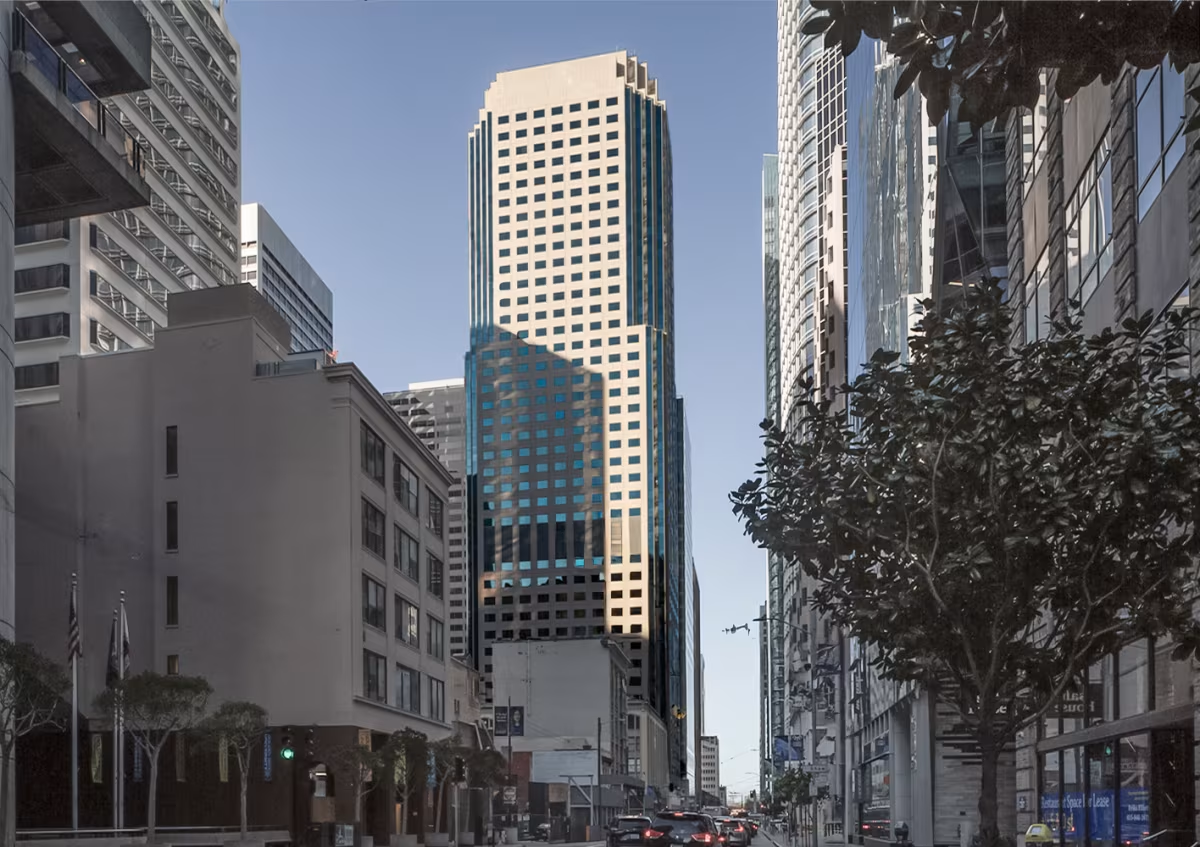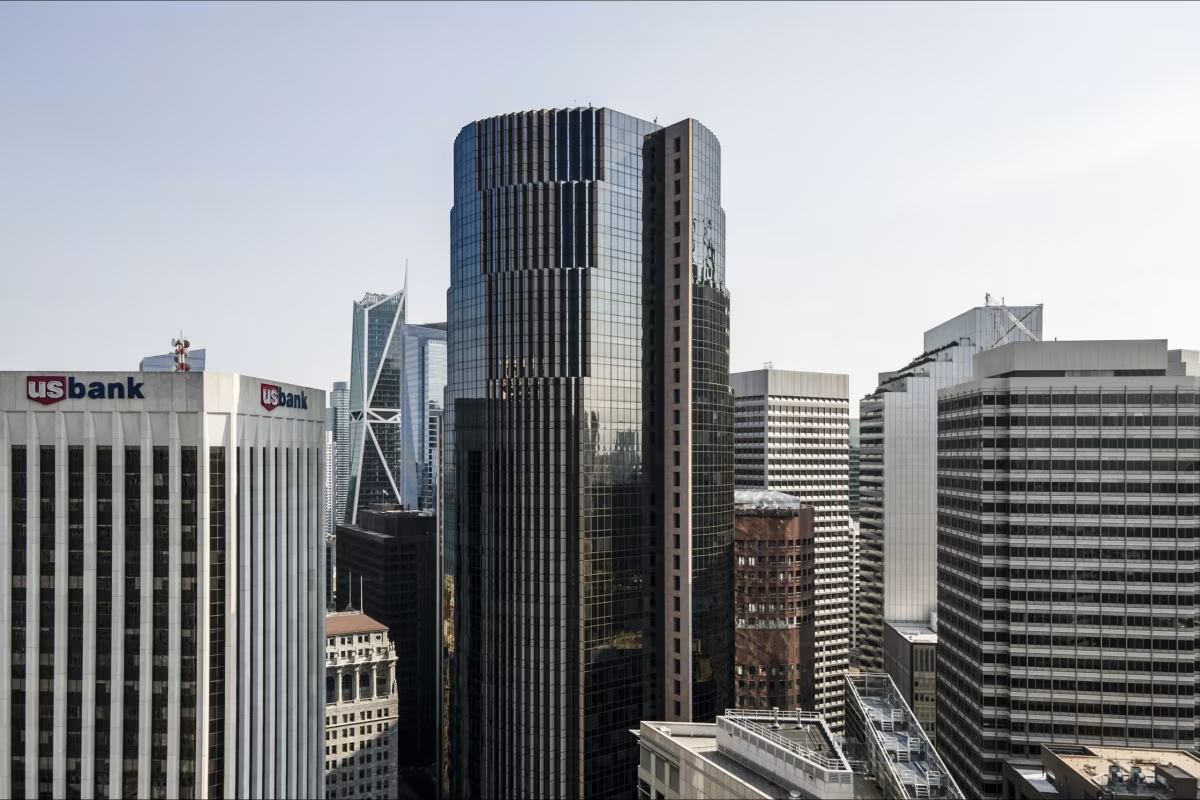Salesforce West vs 101 California Street Building


Comparing the Salesforce West and the 101 California Street Building is interesting because they both stand in San Francisco, CA, and were completed within 3 years of each other, but they were designed by different architects.
This offers a unique glimpse at how rival designers approached projects in the same city during the same era.
Height & Size
Architectural Style
Both the Salesforce West and the 101 California Street Building were designed in line with the aesthetic conventions of the Postmodernism style.
At the time, this style was at the height of its popularity. So both Skidmore, Owings & Merrill and Johnson/Burgee Architects followed what was in many ways expected of them, producing designs that fit comfortably within contemporary architectural norms, rather than breaking with convention.
Uses
Both the Salesforce West and the 101 California Street Building were designed to serve as commercial towers, and that has remained their main use since their completion, serving similar roles in the urban fabric.
The Salesforce West also provides 220 parking spaces.
Structure & Facade
Both the Salesforce West and the 101 California Street Building rely on a Frame structural system.
A frame structure uses a grid of columns and beams to carry the building's loads. This frees the walls from structural duties, allowing for flexible floor plans and larger windows.
They also employ the same type of facade, a Curtain Wall facade.
A curtain wall is a non-load-bearing facade hung from the structural frame. It is anchored to floor slabs and transfers only its own weight and wind loads, allowing for sleek, glassy exteriors.
| Salesforce West | 101 California Street Building | |
|---|---|---|
| Skidmore, Owings & Merrill | Architect | Johnson/Burgee Architects |
| 1983 | Construction Started | 1979 |
| 1985 | Year Completed | 1982 |
| Postmodernism | Architectural Style | Postmodernism |
| Commercial | Current Use | Commercial |
| 43 | Floors Above Ground | 48 |
| 183 m | Height (m) | 183 m |
| 75,940 m² | Usable Area (m²) | 116,264 m² |
| 21 | Number of Elevators | 24 |
| Frame | Structure Type | Frame |
| Steel | Vertical Structure Material | Steel |
| Concrete And Steel | Horizontal Structure Material | Concrete |
| No | Facade Structural? | No |
| Glass, Stone | Main Facade Material | Granite, Glass |
| Fremont Properties | Developer | Hines Interests Limited Partnership |
| Skidmore, Owings & Merrill | Structural Engineer | CBM Engineers |
| CA | State | CA |
| San Francisco | City | San Francisco |
| 50 Fremont Street | Address | 101 California Street |